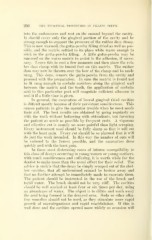Page 456 - My FlipBook
P. 456
200 THE TKCHNICAI. PROCEDURES IN FILLING TEETH.
into the embrasures and rest on the enamel beyond the cavity.
It should cover only the gingival portion of the cavity and be
strong enough to support the pressure of the rubber dam clamp.
This is now warmed, the gutta-percha filling dried as well as pos-
sible, and the matrix settled to its place while warm enough to
stick to the gutta-percha filling. A little gutta-percha may be
smeared on the warm matrix to assist in the adhesion, if neces-
saiy. Leave this to cool a few moments and then place the rub-
ber dam clamp with its buccal foot on this matrix. The rubber
dam may now be thrown over the bow of the clamp and be made
snug. This done, remove the gutta-percha from the cavity and
proceed with the preparation. In case the matrix is found not
to fit snug enough to exclude moisture along the gingival wall
between the matrix and the tooth, the application of carbolic
acid to this particular part will coagulate sufficient albumen to
seal it if a little time is given.
In general, the excavation of buccal gingival third cavities
is difficult mostly because of their persistent sensitiveness. This
causes patients to give the operator trouble when he most needs
their aid. The best results are obtained liy going regularly on
with the work without bothering with obtundants, but favoring
the patient as much as possible by frequent rests. A vigorous
and effective cut is usually no more ])ainful than light scra])ing.
Every instrument used should l)e fully sharp so that it will cut
with the least pain. Every cut should be so planned that it will
do just the work intended. In this way the number of cuts will
be reduced to the fewest possible, and the excavation done
quickly and with the least pain.
In those most distressing cases of intense susceptibility to
this class of decays occurring in young women or young mothers,
with much sensitiveness and suffering, it is worth while for the
dentist to make more than the usual effort for their relief. The
advice in such is that the decay be simply scooped out of the shal-
low cavities, that all undermined enamel be broken away and
that no further attempt l>e immediately made to excavate them.
The patient should be instructed in the use of the brush and
tepid water. The brush should not be very stiff. The cavities
should be well washed at least four or six times per day, using
an abundance of water. The object is to dilute and wash away
the acid being formed in the decayed area. Soda or other alka-
line remedies should not be used, as they stimulate more rapid
growth of microorganisms and rapid reacidulation. If this is
well done and the cavities opened more widely as occasion will


